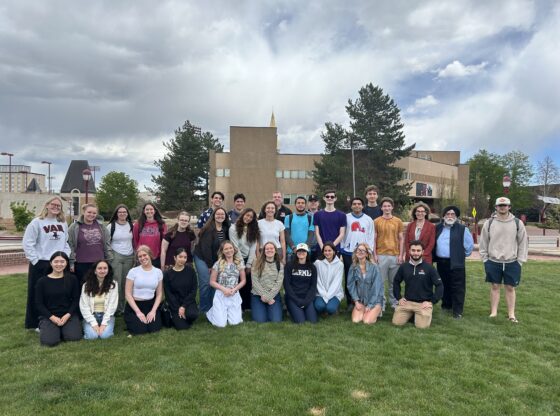Just as J.R.R. Tolkien reinvented the fantasy genre, Suzanne Collins opened new possibilities for dystopia through “The Hunger Games.” Although books like “1984” and “A Clockwork Orange” predate it, Collins modernized the genre and made it accessible to a young adult audience.
The fifth book in the series, “Sunrise on the Reaping” (“SotR”), was released on March 18 and within its first few weeks has attained a Goodreads rating of 4.64.
It follows Katniss’ mentor, Haymitch, during his game, 24 years before the first book is set. It displays Panem during the Capitol’s peak, showcasing fascism at full strength.
In my opinion, this was the cruelest Collins has ever presented the Capitol. In Katniss’s books, characters like Cinna and Tigress, while Capitol citizens, aid the rebels, putting their lives at risk even though they do not gain anything from it. Many of the other characters, like Effie and Katniss’s prep team, are merely ignorant, treating the Districts with humanity but benefiting from Capitol wealth.
Collins typically focuses on how indifference can propagate oppression. Even though the Capitol citizens might have sympathy for the pain the tributes face during the games, they still avidly watch.
However, in “SotR,” Haymitch receives no support from anyone in the Capitol. Instead of arrogance, the tributes are shown outright hostility. While Katniss was talked down to, her prep team still cared about her, genuinely wanting her to survive. Haymitch’s team abuses him, treating him less than human.
It is a stark shift from the themes “The Hunger Games” was founded on. Usually, the books show compassion in desperate times. Even under oppression, there are people willing to risk their privilege to help others. It’s a reminder that we are all human despite division.
So when this small but significant detail is pulled from the story, it shifts the tone. The book is colder and more hopeless than any before it.
Collins’ focus for “SotR” was how powerful propaganda can be, opening the novel with quotes from George Orwell, William Blake and David Hume, making her intent clear.
The Capitol citizens who have been bathed in messages like “No Hunger Games, No Peace!” fully support the games and, through that, the death of the tributes. Instead of the benighted but pitying people from the previous books, we see the citizens give in to propaganda, treating the Districts as the barrier between them and peace, encouraging the pain they receive.
“SotR” also emphasizes how rigged the games are. While this has played a part in every book, like how certain Districts were trained since birth to compete in the games, having a natural advantage, it is the most distinct during Haymitch’s game.
Multiple tributes, Haymitch included, were hand-selected by the Capitol to compete in the games instead of being drawn from the pool of eligible teenagers. The gamemakers designed “mutts” (genetically modified animals like carnivorous squirrels and geese) to only target a specific tribute.
It is a side of the Capitol the author had never shown. While the gamemakers have intervened in the previous books, it is usually done to move the games forward rather than target individual players. For example, in the first book, the gamemakers set fire to the area Katniss has set up camp in, driving her towards the other tributes.
The purpose was not to kill Katniss, at least not yet; instead, the gamemakers sought to keep the games moving. While the fire could be deadly, Katniss was given a clear option to survival: run towards the arena’s populated areas where she would be forced to battle. The fire still puts her in danger and runs the risk of killing her, but the intent was to push the tributes to meet, carrying out the kills in combat.
However, in “SotR,” the mutts created by the gamemakers single-handedly kill tributes. Their purpose is not to incite action between the tributes but rather to viciously kill the teenagers as punishment. By taking part in the games, it shows their willingness to beat a dead horse (or teenager), that no depravity is beneath them.
However, I believe that the most haunting part of “SotR” is its timing. The book is set two and a half decades before the revolution, when the Capitol had full support from its citizens and full fear from the Districts.
While the original trilogy presents the Districts as exhausted and angry with the Capitol, “SotR” lacks the fire that Katniss’ books had. Any kindling of unrest is snuffed out, replaced with resignation.
There is an acknowledgement that change is possible, but just not quite yet. Like the games, time can be cruel.











